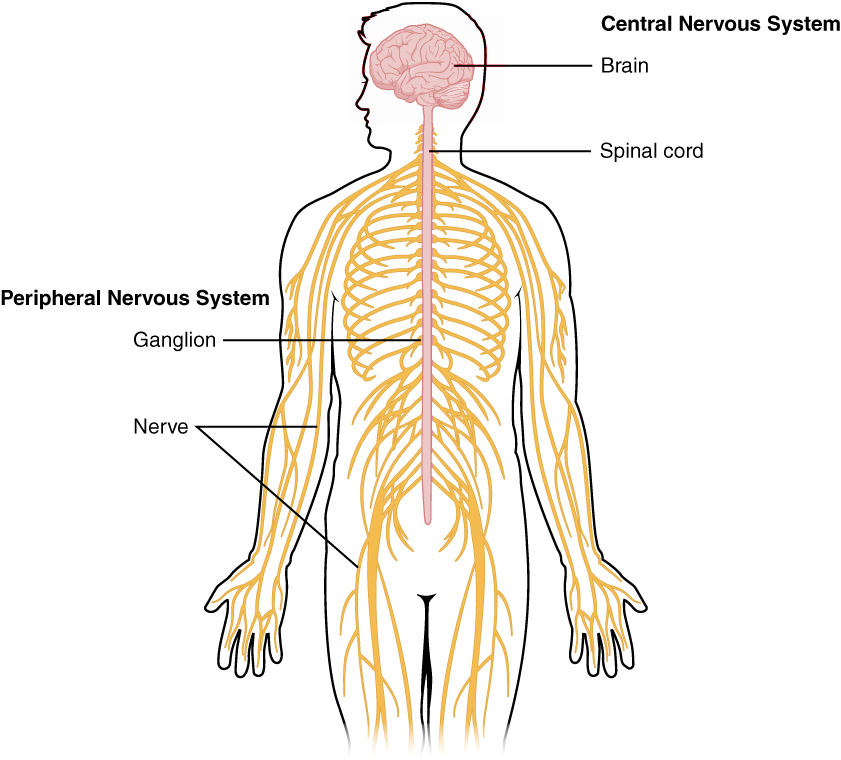- Reflex Arc -
The nervous system has two main devisions:
- Central Nervous System = made up of the spinal cord and the brain ~ (CNS)
- Peripheral Nervous System = made up nerves branching from either the brain or the spinal cord. ~ (PNS)
Peripheral System the divides into subdivisions:
- Sensory neurons = carries electrical impulses AWAY from receptors TO CNS
- Motor neurons = carries nerve impulses AWAY from CNS TO effectors
Motor neurons are sub-divided into:
- Voluntary nervous system = carries nerve impulses to body muscle // conscious control = voluntary
- Autonomic nervous system = carries nerve impulses to glands // smooth muscle & cardiac muscle under subconscious control = involuntary.
This is a summary of the nervous organisation. ↑
Spinal Cord
This is summarised in the picture // no need for additional information the spinal cord for the specification is pretty simple.
Reflex Arc
Involuntary response to a sensory stimulus = Reflex Arc.
For example, withdrawal reflex // a spinal reflex
Spinal reflex has 7 main stages:
Stimulus > Receptor > Sensory Neurone > Coordinator > Motor Neurone > Effector > Response
An example of this would be if you was to touch a hot surface -
Stimulus = heat from the surface
Receptor = temperature receptors on the skin generates a nerve impulse in sensory neurone
Sensory Neurone = passes impulse to spinal cord
Coordinator // Intermediate neruone = links sensory to motor neruone in spinal cord
Motor Neurone = carries the impulse from spinal cord to the muscle in the upper arm
Effector = muscle in the upper arm is stimulated to move
Response = pulling your hand away from the hot surface


No comments:
Post a Comment